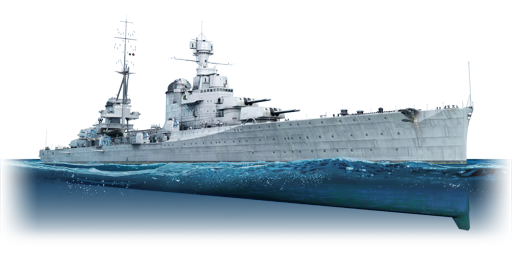The RN Bolzano, laid down on 11 June 1930, launched on 31 August 1932, completed and delivered on 19 August 1933, was a heavy cruiser based on the hull of the Trento class. RN Bolzano had several modifications and was practically a mixture of the Zara and Trento classes, featuring the powerplants and 203 mm/53 Ansaldo mod.1927 cannons of the Zara class with reduced protection on the main turrets, improved watertighting compartmentation compared to the Trento class, and other minor modifications. However, she proved to be weaker than the Zara class and therefore an almost useless upgrade. Upon entering service, RN Bolzano joined the naval forces deployed in the Mediterranean. During World War II, she participated in the Battle of Punta Stilo, in the interception of Allied ships involved in the British Operation Mincemeat, and in the Battle of Mid-August, during which she was severely damaged by a torpedo from the submarine HMS Unbroken. She would remain in the port of La Spezia and be abandoned after the armistice. On 22 June 1944, she was attacked by British and Italian assault craft, and only in April 1945 was she found, sunk and capsized by the American 5th Army and the first Italian Co-Belligerent units. She was later recovered and scrapped in 1949.
Introduced in Update "Alpha Strike", RN Bolzano mixes features from RN Trento and RN Zara. The main armament is improved thanks to Zara's 203 mm cannons with a better reload, but the anti-air armament and armour protection remain mediocre. She has good manoeuvrability and speed, so it is recommended to play around hard cover such as islands to maximise survivability.















